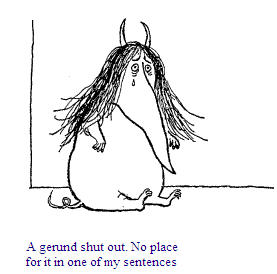The next section of my thesis deals with ‘improvable objects’, an idea introduced in Wells’ book ‘Dialogic Inquiry’. Wells credits the idea to Bereiter and Scardamalia in 1996
‘This focus on an “improvable object,” as Bereiter and Scardmalia (1996) term it[…]’
so I go and read their chapter.
Can’t find the term. Well, Scardamalia is spelled wrong in the reference, so maybe the date’s wrong. If it’s a term introduced by Bereiter, maybe he reuses it in his later book (2002). Nope. Maybe it’s in Bereiter and Scardamalia’s earlier book? Nope. Maybe it’s in one of their earlier articles? Nope.
So, naturally, I google it. And find that this blog is number one hit for “improvable object”. So not much help t/here. Lots of people cite Wells 1999 and Bereiter and Scardamalia 1996. Maybe I missed it? Then I find the 2002 book in Google books. It definitely doesn’t mention improvable objects. Finally I track down a downloadable PDF of the 1996 chapter and do a word search. No improvable objects, but only ‘improvable human constructions’ – in this case, mathematical ideas. I can see a strong connection between the two phrases, but they’re not the same.
I must have wasted about four hours on this. The original mis-phrasing of the reference was compounded by subsequent writers not bothering to check. Grrrr.
 If you look at the list of sociocultural terms I listed a couple of posts back, you’ll observe that they’re not words which you’d expect to hear in day-to-day conversation. They also prove to be difficult words to use in a thesis, and I’ve been struggling to use any of them in my current chapter.
If you look at the list of sociocultural terms I listed a couple of posts back, you’ll observe that they’re not words which you’d expect to hear in day-to-day conversation. They also prove to be difficult words to use in a thesis, and I’ve been struggling to use any of them in my current chapter.